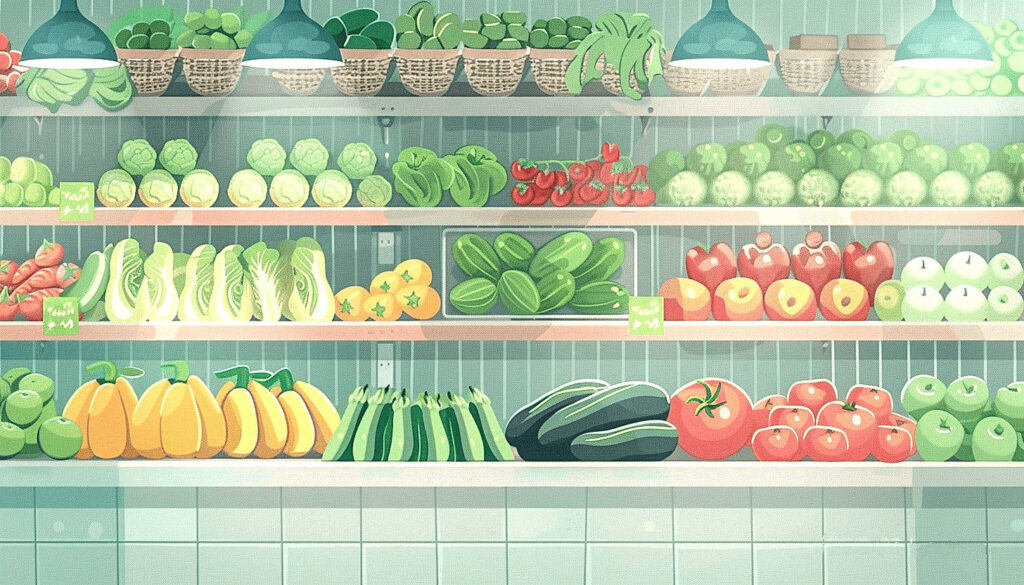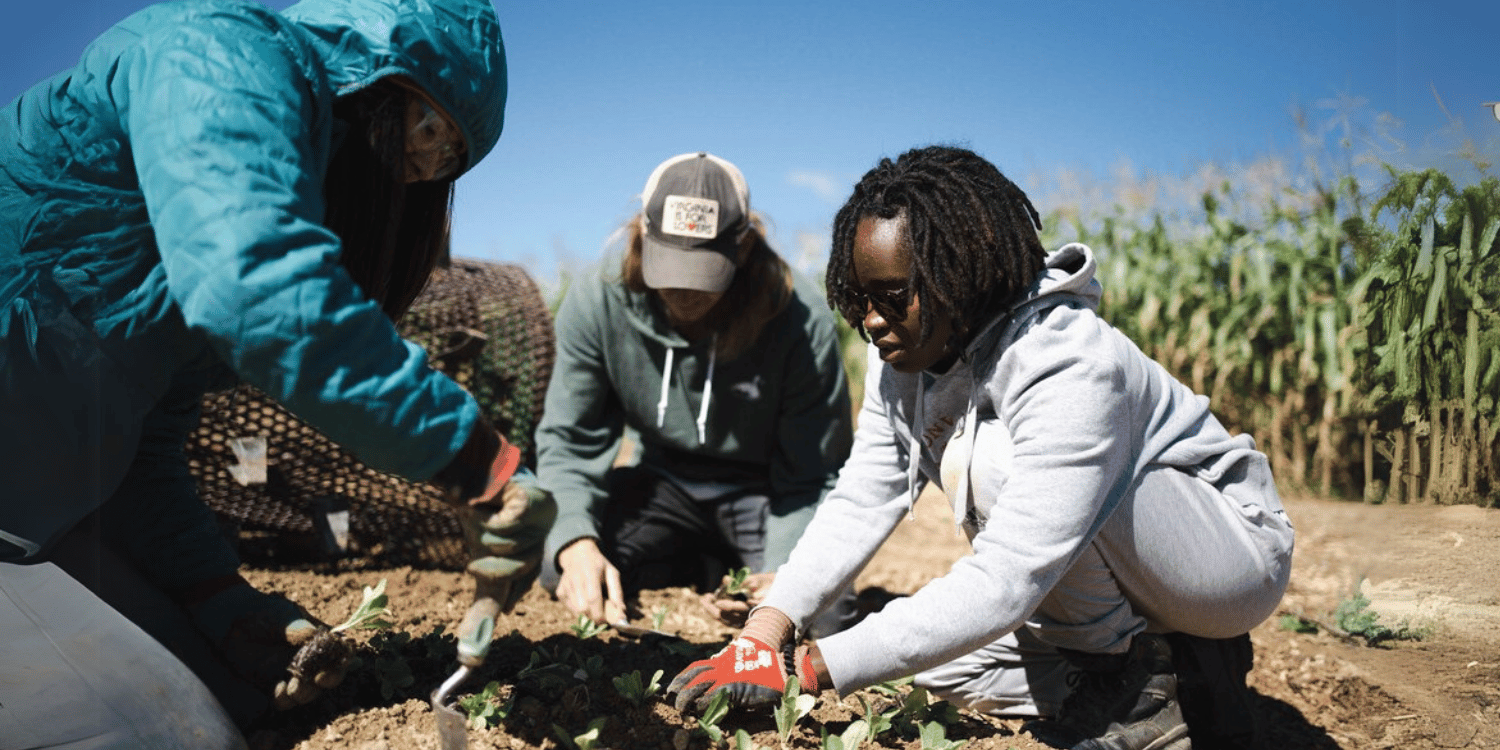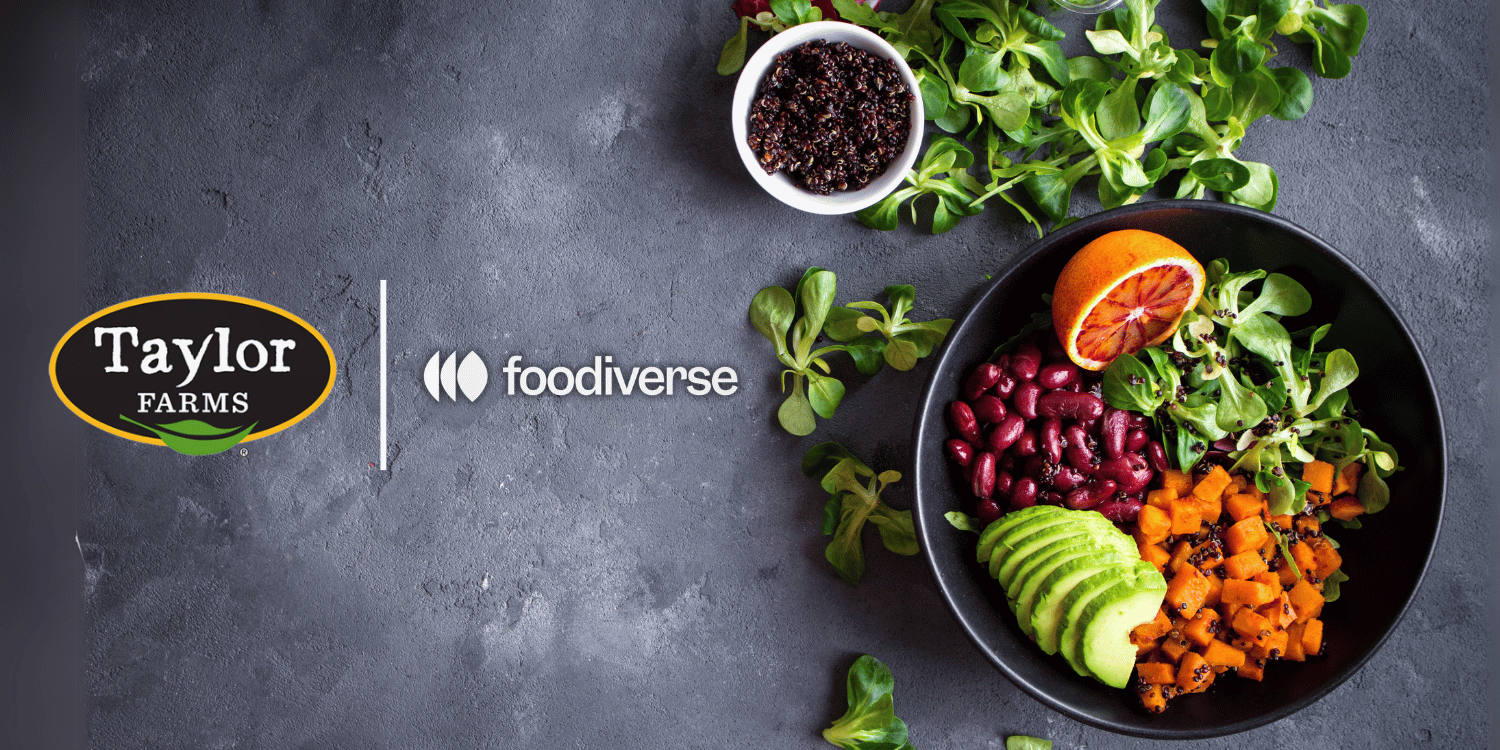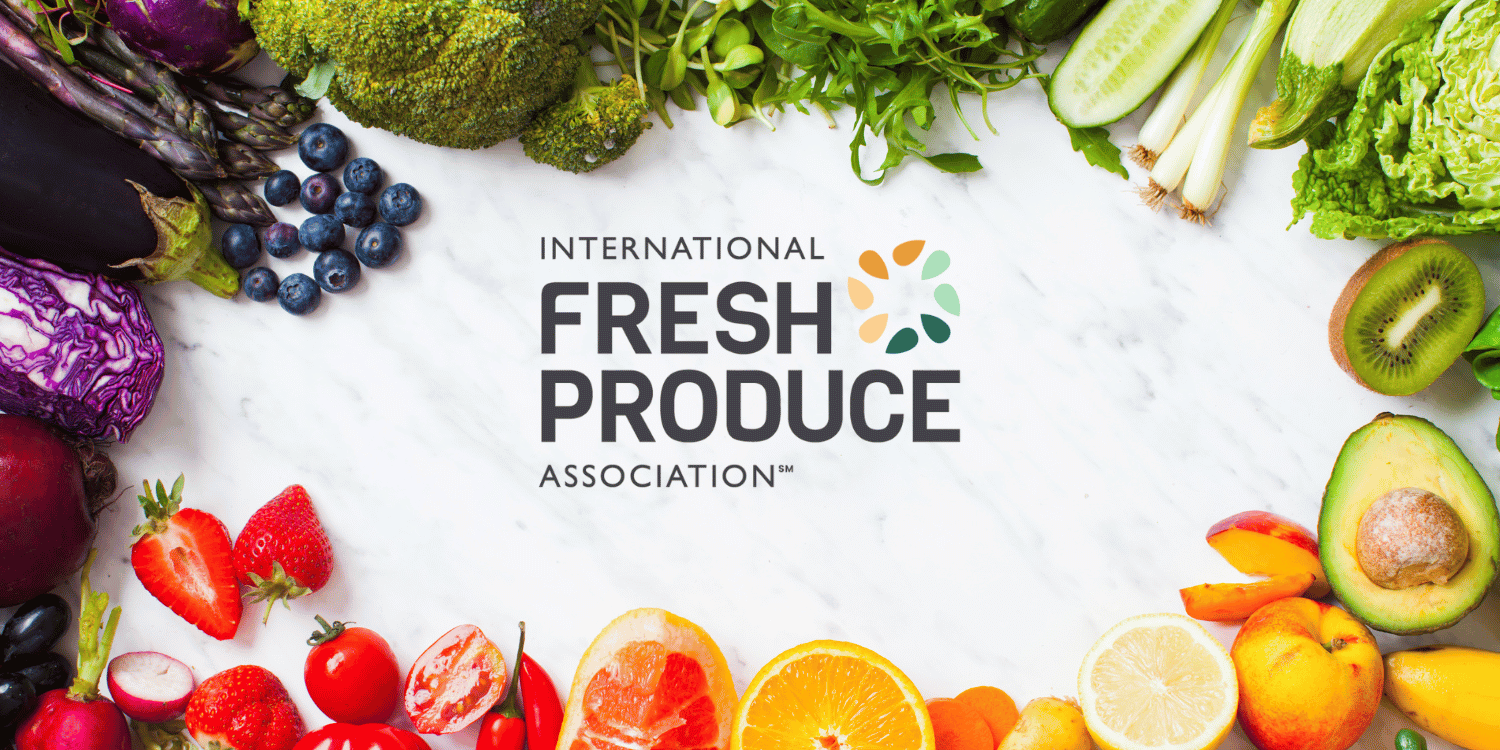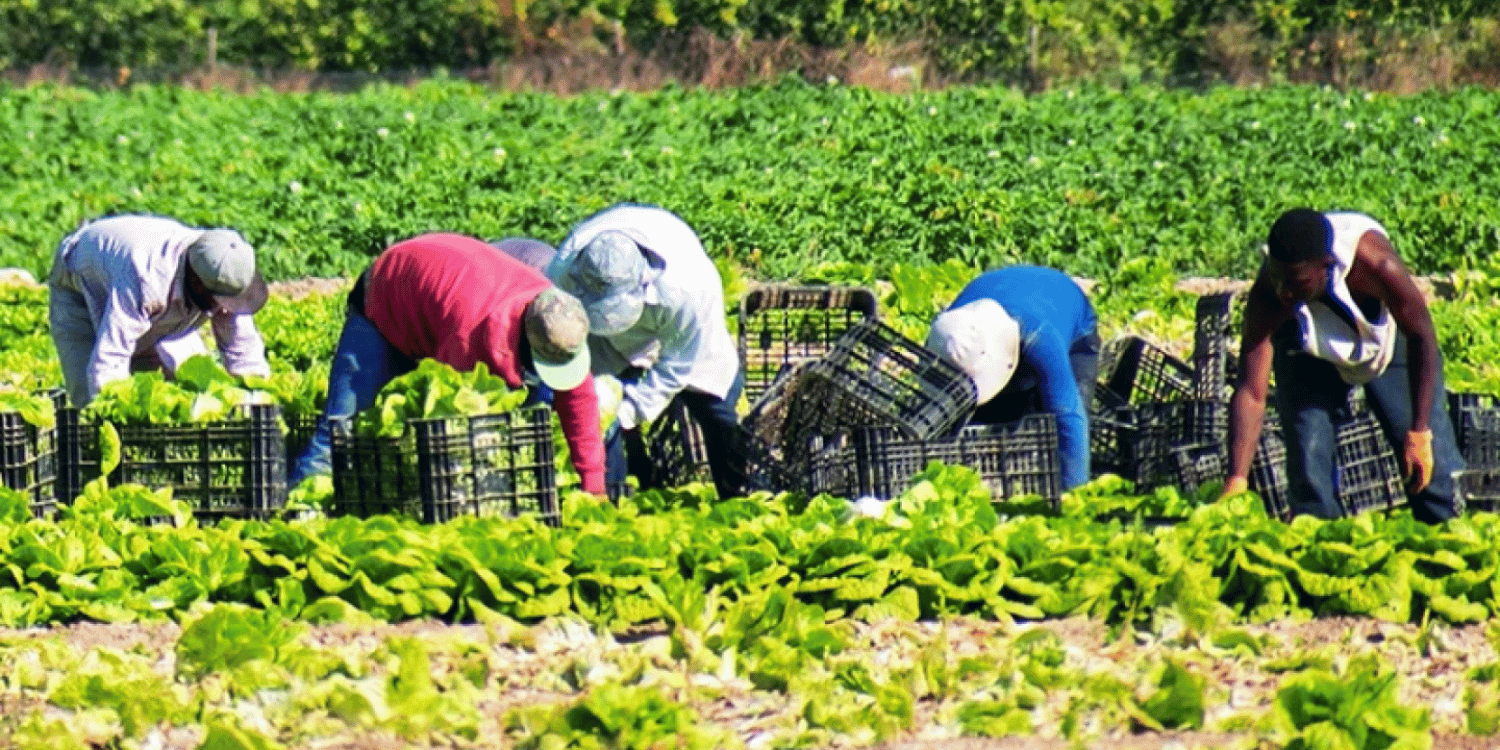Retail standards and requirements for fresh produce ensure quality control and safety for consumers.
These standards include meeting criteria for overall quality, size, ripeness, and freedom from disease or damage.
For instance, fruits and vegetables must be free from pests, bruises, and mold, and must meet sizing norms.
Retailers must also abide by regulations on food handling and storage, with temperatures and environments maintained to prevent spoilage.
Furthermore, they are expected to keep track of their produce’s sourcing and distribution pathway to guarantee traceability in case of recalls.
At the end of the day, these retail standards and requirements maintain consumer trust and ensure that fresh produce sold is safe, high-quality, and satisfies the stipulated guidelines.
- Defines quality parameters as disease, size, ripeness, and damage in fresh produce.
- Touches upon the vital role of size in retail standards for produce.
- Explains the assessment process for ripeness in the produce sector.
- Discusses the commodity-specific standards to prevent pests in fresh produce.
- Covers the importance of proper handling, storage, and temperature control at retail stores.
Indeed, our discussion only scratches the surface of retail standards and their impact on the quality of fresh produce. As we proceed, we’ll be exploring additional topics of interest such as the effects of different harvesting and post-harvesting practices, and how they tie-in with retail standards.
Moreover, we’ll study how consumer awareness about these quality parameters can contribute to healthier buying habits. There’s lots of information to be obtained from understanding these concepts, so join us as we look more deeply into these nuances of fresh product retailing.
Next, we will talk about the role of government regulations and voluntary standards in shaping retail practices. This information could help you further appreciate the work that goes behind ensuring the best quality of produce at your local grocery store. Don’t miss it.
Contents
- What Defines Quality in Fresh Produce?
- Importance of Size in Retail Standards
- How is Ripeness Assessed?
- Disease and Damage Criteria
- Preventing Pests in Fresh Produce
- Handling and Storage Regulations
- Temperature Control in Retail Stores
- The Need for Produce Traceability
- Necessity of Distribution Pathway Records
- Recall Procedures in Retail
- The Bottom Line
What Defines Quality in Fresh Produce?
In Short: Quality in fresh produce is determined by several factors including flavor, texture, freshness, farming and handling practices, and adherence to food safety standards. Consumers can uphold quality by supporting farmers who follow sustainable methods and meeting strict safety regulations.
Quality in fresh produce is a mix of various factors. It’s not just about how the fruit or vegetable looks.
Flavor, texture and freshness are also key. Does the produce taste good? Is it ripe and ready to eat?
Consider this: have you ever bought a gorgeous-looking apple, only to find it bland and mealy when you bit into it?
Quality involves more than just the physical attributes of produce. It also encompasses aspects related to farming practices and handling.
An important aspect of defining quality in fresh produce are agricultural standards. These refer to the methods employed in growing and harvesting the produce.
Unsustainable farming practices might lead to the degradation of the produce’s quality. Think about the use of pesticides or harsh farming techniques.
Producers following strict organic and sustainable farming practices tend to offer produce that’s high in quality. And isn’t this an important factor when choosing where to buy our fruits and vegetables?
Hand-in-hand with agricultural standards is post-harvest handling. How is the produce taken care of once it’s reaped from the earth?
Improper post-harvest handling can compromise the quality of the produce. Imagine a crisp head of lettuce, wilted and bruised because of rough handling.
With this in mind, let’s take a look at some attributes that can be taken into account when determining the quality of fresh produce:
- Visual appeal – color, size, and absence of defects
- Texture – crunchiness in vegetables, juiciness in fruits
- Aroma – a good indicator of ripeness and flavor
- Farming practices – organically grown, pesticide-free
- Handling – appropriate methods to limit damage and spoilage
While talking about produce, another point to consider is the issue of seasonality. Do you agree that strawberries taste better in spring, when they’re in season?
Produce that’s in season is typically fresher and tastes better. This is because it’s grown under ideal conditions and harvested at the right time.
But does this mean we should limit ourselves to seasonal produce only? No, storage and preservation technologies allow us to enjoy produce year-round.
However, do keep in mind the quality might not be equal to in-season, fresh-picked fruits and vegetables.
Moving onto another important point in our discussion, have you considered food safety standards?
Produce that meets strict food safety regulations also counts as high-quality. We’re talking about those free from harmful bacteria and chemicals.
Without doubt, producing quality fresh produce is a complex process. It involves careful attention to farming, handling and safety practices.
We as consumers play a critical part in maintaining the quality of the produce we consume. By making informed decisions, we can support farmers who invest in quality, sustainable practices.
Importance of Size in Retail Standards
In Short: Size plays a significant role in retail standards for fresh produce, impacting customer satisfaction, sales, and efficiency. It influences perceived value, ‘eatability’, shelf life, and helps in efficient sorting and packaging while upholding customer trust.
Retail standards are a crucial part of efficiency and customer satisfaction in the world of fresh produce. What element among all holds significant influence?
Size, you heard correctly.
It may seem like a trivial detail, just an aesthetic factor. However, in reality, it contributes significantly to customer expectations and perceptions of quality.
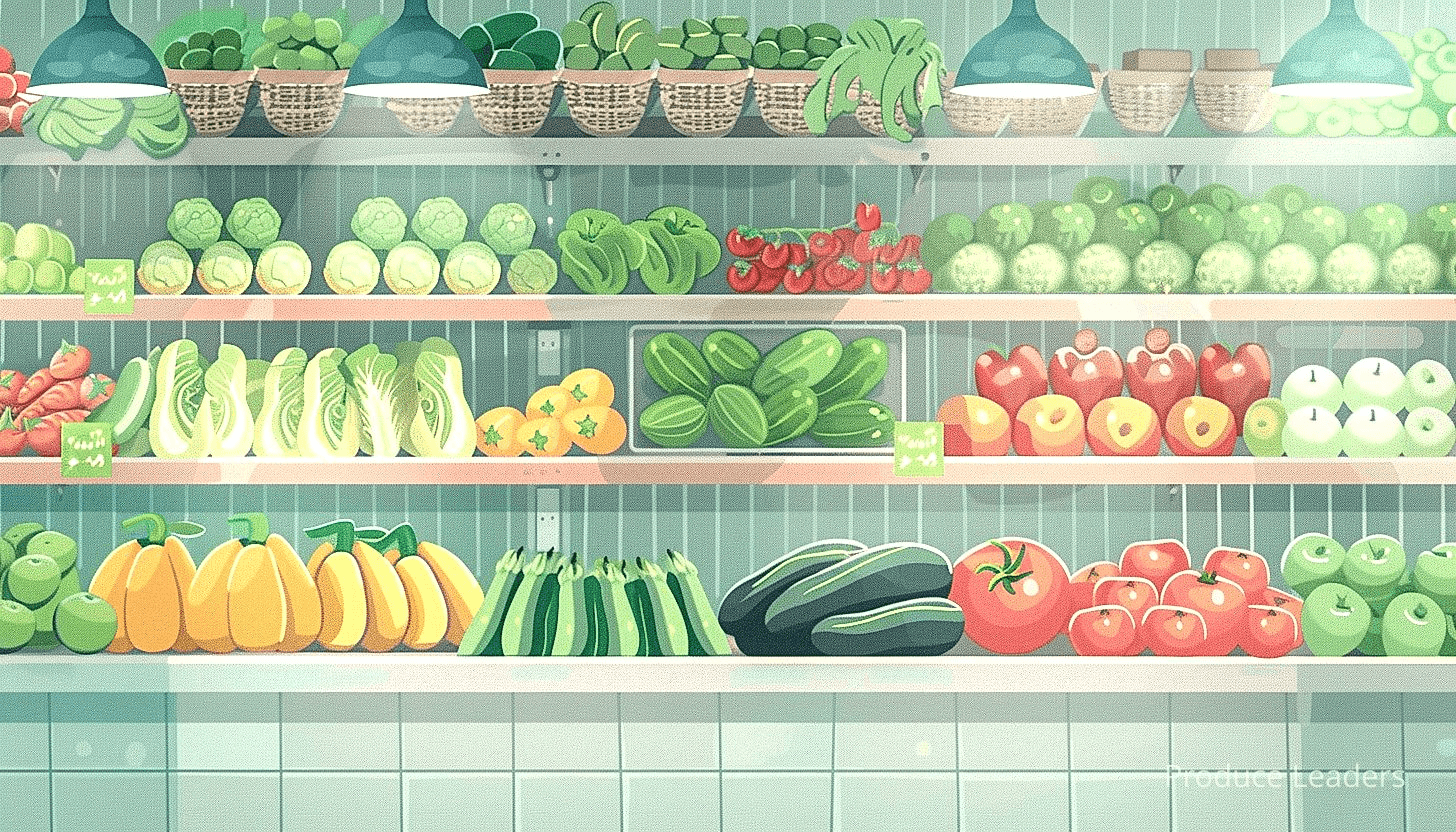
Have you ever picked up the largest apple in the fruit section? This natural bias for larger produce demonstrates the significance of size in retail standards.
Let me tell you, how does size impact the sales, efficiency, and overall success of fresh produce in retail?
The first and foremost issue is the perception of value.
In retail, bigger produce is often perceived as providing a better value, possibly even fresher or richer in taste. On the contrary, does that mean people won’t buy smaller fruits or vegetables?
Answer: They still do!
Smaller produce, if uniform and consistently high-quality, can be just as appealing. Yet, its importance cannot be understated.
Take a moment to consider the following points:
- Size impacts the eatability of fresh produce
- The size of fresh produce can influence its shelf life
- Different sizes cater to different demands
Let’s dig in a little deeper,
‘Eatability’ refers to the ease with which one can eat a piece of produce. Whether the customer can eat it in one bite, or if it requires cutting and preparation. It has a direct influence on customer satisfaction and preference.
Similarly, the size of fresh produce plays a role in determining shelf life. Would smaller bananas turn black sooner than their bigger counterparts?
Actually they do. Thus, retailers need to manage different sizes efficiently to reduce food waste.
Different sizes cater to different demands. Does every customer prefer large apples at all times? Perhaps not. Here, size undoubtedly plays a role in retail standards.
Furthermore, size guidelines ensure that fresh produce is sorted and packaged properly. A uniform size can increase the efficiency of sorting and packaging processes. Thus, benefitting both the retailer and customers in terms of convenience.
Pro Tip: In retail standards, the size of fresh produce plays a significant role in shaping customer expectations, satisfaction, and value perception, influencing not only sales but also the efficiency of sorting, packaging, and freshness longevity.
Regulation of size also ensures consistency. It upholds customer trust as they know they are purchasing a standard and reliable product.
To summarize, size is undeniably a factor of great significance in retail standards. Its role goes beyond just aesthetics or personal preference. Size significantly impacts customer satisfaction, sales, and the efficiency and success of fresh produce in the retail industry.
How is Ripeness Assessed?
In Short: Assessing the ripeness of produce involves both sensory analysis and scientific tools such as color measurement devices and electronic noses. The evaluation process varies based on the type of produce, blending tradition and technology to ensure freshness and quality.
Let’s begin our exploration by acknowledging how important the ripeness of fresh produce is. After all, would you want to bite into an unripe or overripe fruit?
The process of assessing ripeness is multi-faceted, involving an intricate combination of sensory analysis and scientific evaluation.
We can’t deny the role our senses play in choosing fresh produce. By sight, touch, smell, and sometimes taste, we instinctively judge the ripeness. But is this enough?
Wouldn’t it be great if there were objective methods to go about it? Color measurement devices, rapid visco analysers, and infrared spectroscopy provide scientific accuracy.
Color is a reliable indicator of ripeness. Produces like bananas and tomatoes provide visual cues. However, color is not always a clear indicator as it could be misleading due to external factors. Truth be told, you can’t always judge a fruit by its color, can you?
For texture, there are specialized devices measuring how hard or soft a fruit is. Now, isn’t this a great tool when you don’t want to squeeze every fruit at the supermarket?
The evocative world of smells compels us! Fruits emit specific gases as they ripen, like ethylene. Electronic noses can detect these gases. Incredible, isn’t it?
But these methods still require a seasoned eye or equipment which might not be practical for daily use.
Here are some commonly used sensory methods:
- Sight: Look for consistent coloration and no sign of mould or spots.
- Touch: Firmness communicates a lot – not too hard nor too soft.
- Smell: Ripe produce tends to have a distinctive fragrance.
- Taste: Although not always practical, tasting helps to confirm ripeness.
Let me tell you, there isn’t one-old fits all method here, is it? The evaluation process can differ substantially from one type of produce to another. After all, keep in mind that not all fruits and vegetables ripen in the same way!
While we may not have a perfect system, these mechanisms, blending tradition and technology, help to ensure freshness and quality.
At the end of the day, assessing ripeness is both an art and a science, isn’t it? It creates an intriguing interplay of sensory experiences and scientific methods. But the ultimate goal remains the same – providing fresh and ripe produce to consumers.
Disease and Damage Criteria
In Short: In the fresh produce industry, it is crucial to identify and control diseases, limit damage, and maintain high retail standards. This involves education, regular monitoring, implementing disease control methods, and identifying damage causes, in order to provide not only appealing but also safe and healthy food.
In the fresh produce industry, maintaining high standards in relation to disease and damage is paramount. A major part of this is being familiar with the numerous diseases that can affect produce.
Not only must these types of diseases be identified accurately, swift action also becomes inevitable so as to limit their spread. Does your fresh produce meet these standards?
Furthermore, an outstanding area of concern is the struggle to meet damage criteria. Are you aware that damaged fruit and vegetables can both lose value and provide a potential breeding ground for disease?
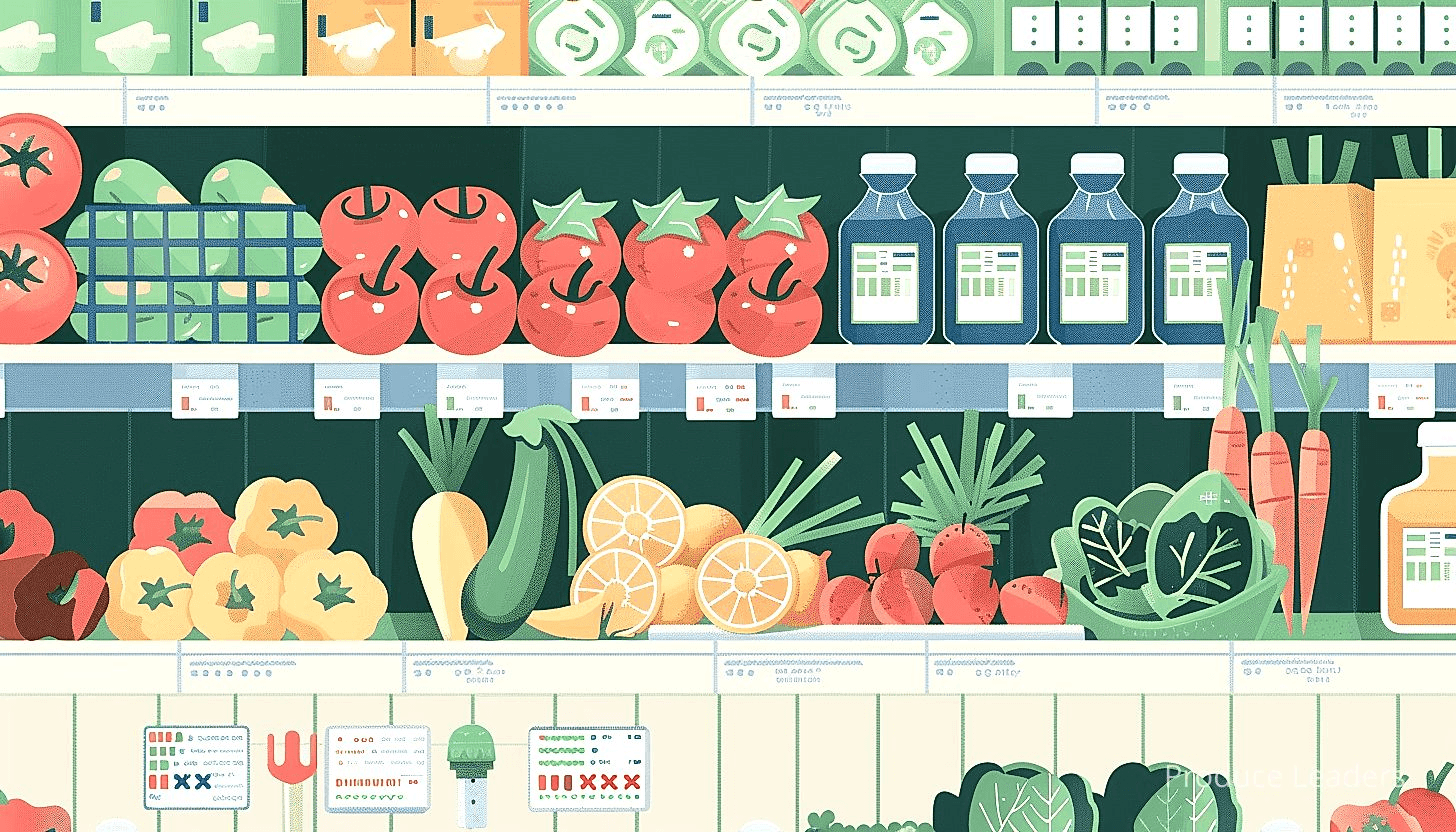
Therefore, growers, wholesalers and retailers alike must conduct regular checks throughout storage and transport procedures. This is certainly no small feat, is it?
Let’s take a quick overview of some of the most common diseases and damage that can occur in fresh produce. This will be helpful to understand, wouldn’t you agree?
The diseases that often occur in fresh produce include bacterial soft rot, grey mold, leaf curl, and decay. The kinds of damage that fruit and vegetables can undergo include bruising, temperature injuries, discoloration, over-ripeness, and scald.
Dedicated training is needed in order to be able to identify these diseases and forms of damage. Certainly, this is one of the key elements of maintaining high retail standards, right?
Given the huge variety of diseases and types of damage, here are some key elements for consideration:
- Educating yourself and your staff on how to recognize disease symptoms and signs of damage is crucial.
- Establishing regular monitoring and reporting systems is highly beneficial.
- Implementing disease control methods specifically suited to each type of disease can make a significant difference.
- Identifying potential damage causes and taking measures to reduce them can save a lot of time and money.
Are you committed to maintaining high retail standards?
FWouldn’t you agree that it’s of extreme importance to constantly refine the quality ?
Pro Tip: To maintain high standards in the fresh produce industry, you should educate yourself on recognizing disease symptoms and signs of damage, establish regular monitoring systems, implement disease control methods, and take measures to reduce potential damage.
The ultimate goal is not just about selling appealing produce, but safe and healthy food for consumers. It’s a non-negotiable standard expected by consumers, right?
As this industry continues to evolve, so too will the disease and damage criteria. Staying informed and adaptable is therefore important for success in the fresh produce sector, wouldn’t you say?
Preventing Pests in Fresh Produce
In Short: Pest prevention in fresh produce relies on strategic planning with a focus on identifying vulnerabilities and maintaining cleanliness in stores. Significant steps include conducting regular inspections, using modern tracking technologies, monitoring high-risk areas, choosing the right protective wrap, and controlling store’s temperature and humidity.
The journey to prevent pests in fresh produce begins with careful planning. By investing in proactive strategies for pest management, retailers can reap long-lasting benefits.
Let’s dig in into this, shall we? Being strategic means casting an eye over all the potential vulnerabilities of your produce and identifying mitigation tactics. This approach isn’t just recommended; it’s a necessity in today’s highly competitive retail landscape.
Isn’t it easier to prevent an issue rather than dealing with it? Of course, it is. Retailers should be more inclined to keep pests out of their facilities by making modifications to the store layout and monitoring activities consistently.
Observations can help identify problem areas before they escalate. Store cleanliness should ideally be a top priority. Regular cleaning, especially around storage and display areas, reduces the opportunities for pests to thrive.
Active tracking of pests within the premises can be a game-changer.
Here’s a list of the essentials you might want to consider while planning a pest tracking activity:
- Conduct regular inspections
- Use modern tracking technologies
- Maintain a record of pest activities
- Continuous monitoring in high-risk areas
See how important these steps can be? Not only would they help detect signs of infestation early on, but they could also prevent serious damage to inventory if acted upon regularly.
Wrapping fresh produce isn’t only meant to be a feast for the eyes, but it serves a purpose. It helps protect the produce against potential pests. But, shouldn’t the wrapping be stopped if it’s causing more harm than good? Absolutely.
Certain types of wrap can lead to condensed moisture, which can attract pests. Hence, choosing the correct wrap and managing its usage correctly is equally important.
Retailers are also recommended to ensure their store’s temperature and humidity are regularly monitored. As we all know, certain pests are attracted to specific environmental conditions, aren’t they?
Important: By investing in proactive strategies for pest management, such as regular inspections, the use of modern tracking technologies, continuous monitoring in high-risk areas, and meticulous attention to store cleanliness and layout, you can prevent pests in fresh produce and avoid serious damage to your inventory.
Another aspect could be integrating pest control into your product selection process. Imaginably, selling produce that does not attract pests in the first place can be advantageous, agreed?
While strategies will vary based on the specific needs and vulnerabilities of each retailer, understanding and applying these pest prevention best practices will ensure that your fresh produce stays fresh and safe to consume. Don’t forget, prevention is always better than trying to solve a pest infestation once it has taken hold.
Handling and Storage Regulations
In Short: Handling and storage regulations are critical in the retail sector, prioritizing personal hygiene, clean equipment, specific temperature controls, and careful arrangement of produce. These guidelines are essential for maintaining the quality of fresh produce, enhancing shelf life, and ensuring public health and safety.
When dealing with fresh produce in the retail industry, one aspect that cannot be overlooked is handling and storage regulations. Have you ever wondered about the specific details regarding these important elements?
The first step includes the correct handling of produce. With strict regulations in many countries, proper handling of produce is a must.
This typically includes the necessity for workers to maintain personal hygiene. It’s important, isn’t it? A simple act of hand washing can prevent numerous foodborne illnesses from spreading.
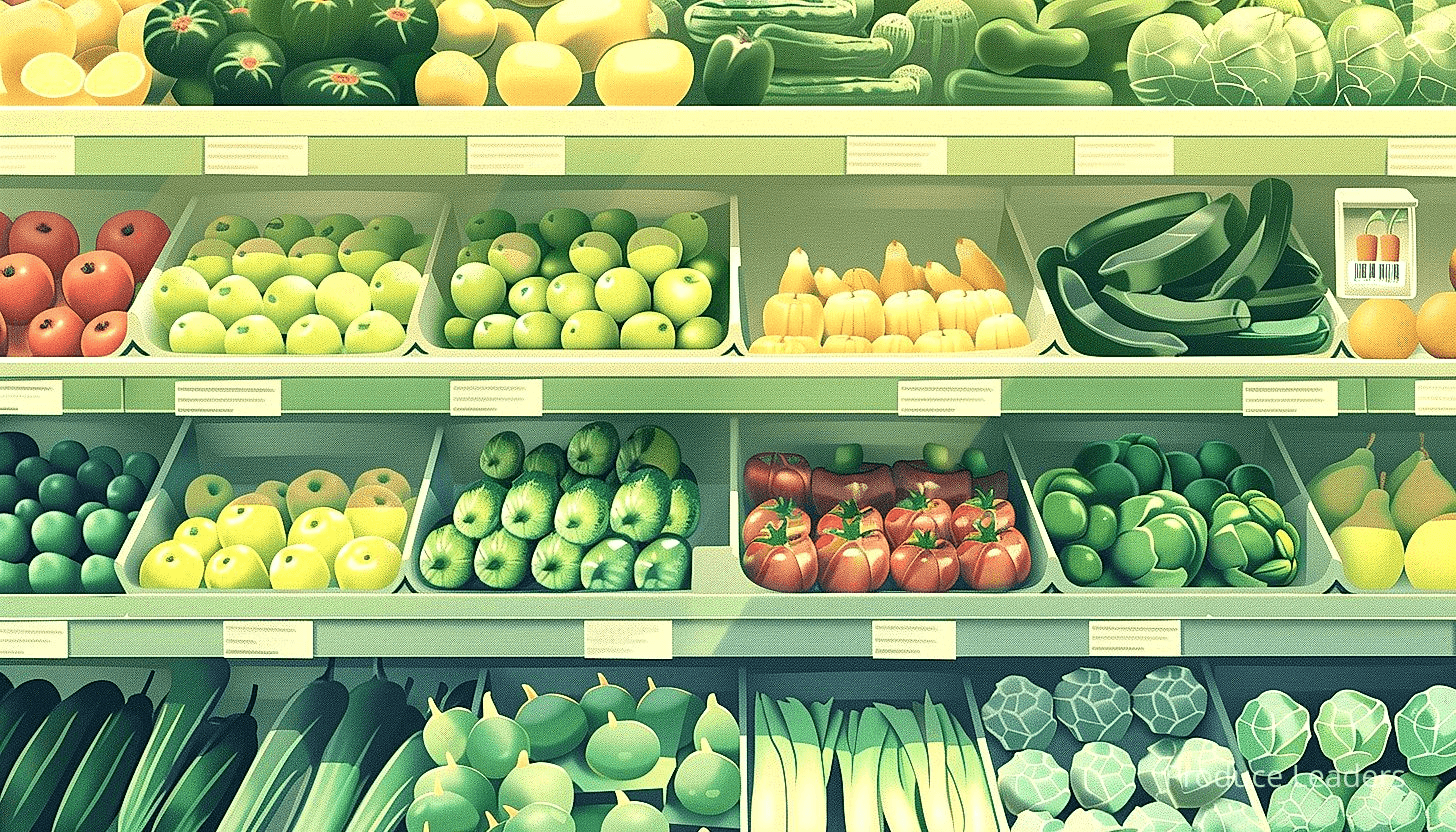
Have you ever considered the importance of clean equipment? Special care should be taken to ensure that harvesting, packing, and storage equipment are cleaned and sanitized regularly.
Can you guess what’s next? It’s the regulation around the actual storage of produce. This is an area where thoroughness plays a major role.
The storage area’s cleanliness and temperature controls are paramount. These are the core details that can ensure the quality and safety of the produce.
As it might seem obvious, there are different guidelines for various types of produce. Many items like apples, berries, and cabbages require cool temperatures to remain fresh and protected.
Let’s take a look at them:
- Apples should be stored at a range of 30-32°F.
- Berries do best at a strict temperature of 32°F.
- On the other hand, cabbages perform optimally within 32-40°F.
Notice the precise details? It’s quite interesting, isn’t it, how specific temperatures can maintain freshness in produce?
Conversely, items such as bananas, tomatoes, and onions should not be stored under refrigeration. Unless, of course, the climate is unusually warm.
Another area you might overlook, but can’t afford to, is the arrangement of produce. Yes, even this matters. The orderly packing of fruits and vegetables can significantly enhance their shelf life.
Are you considering the impact of over-stacking? It can cause significant physical damage to the goods. Hence, the importance of proper organization and arrangement.
I bet you didn’t know just how intricate the details could get in terms of handling and storage regulations. It’s a fact that these guidelines play a important role in maintaining the quality of fresh produce in the retail industry. Intriguing, isn’t it?
It’s essential to understand that these regulations are not only for show; they play a important role in maintaining public health and safety. It’s a responsibility everyone working in the retail sector must uphold.
Pro Tip: Proper handling and storage regulations are crucial in retail industry; maintain personal hygiene, clean equipment regularly, arrange produce orderly, and store them under recommended temperature levels to ensure their freshness and enhance shelf life.
Can you imagine the impact if these regulations were not adhered to? The possibilities are quite alarming, hence the necessity of strict adherence to these regulations and standards.
Now, you are a step closer to a better understanding of the retail world of fresh produce. The next time you shop, won’t you view the neatly stacked fruits and vegetables a little differently?
Temperature Control in Retail Stores
In Short: Temperature control in retail stores is critical for preserving the quality and longevity of fresh produce, with practices such as maintaining the cold chain, effective refrigeration, and regular temperature checks. It’s a blend of technology, strict protocol adherence, and retail staff dedication, underlining its importance for customer satisfaction and quality assurance.
The management of temperature in retail stores is incredibly important for the longevity and quality of fresh produce. The sheer importance of this can’t be overstated, can it?
Let’s think about this. Fresh produce is highly perishable and requires optimal conditions for its preservation.
Temperature control aids in maintaining the nutritional content of the produce and preventing premature spoilage. Such control is especially crucial in tropical regions, isn’t it?
It’s high time we understood the handling of temperature-sensitive produce like berries, leafy vegetables, and certain tropical fruits, isn’t it?
Here are some common practices used in retail stores for temperature control:
- Compliance with cold chain: Maintaining a consistent temperature from field to store to prevent thermal shock to the produce.
- Effective Refrigeration: Store’s HVAC (Heating, Ventilation, and Air Conditioning) system needs to be effective and maintained regularly.
- Use of Thermometers: Regular temperature checks to ensure the produce is stored at the correct temperature.
Maintaining the cold chain is the responsibility of all involved in the supply chain, from growers to store owners.
Disruptions in the cold chain can drastically damage the shelf-life and quality of the produce, don’t you think?
A store’s HVAC system plays an integral role in managing in-store temperatures.
Poorly managed HVAC systems can lead to uneven temperatures, adversely affecting the produce. Is this something we want?
Thermometers are used to routinely check temperatures across the store, making sure that the fresh produce is stored at the prescribed temperature range.
Consistent monitoring helps in prompt identification of any temperature fluctuations, thus ensuring the quality of the produce.
We can’t deny the role of retail staff in maintaining temperature control, can we?
Proper training is essential to ensure that the staff is aware of correct handling procedures and temperature requirements for different produce.
Temperature control in retail stores goes beyond just adjusting thermostats.
It involves a combination of technology, strict adherence to established protocols, and the dedication of the retail staff.
Thus, it’s clear that for fresh produce, adequate temperature control is parallel to maintaining quality and ensuring customer satisfaction.
The Need for Produce Traceability
In Short: Produce traceability provides critical transparency and accountability in the fresh produce industry, allowing for enhanced quality control, improved supply chain management, and increased consumer confidence. It represents a business opportunity for retailers, offering a way to manage foodborne disease outbreaks, execute efficient product recalls, and attest to quality standards, all crucial in the context of growing global trade.
Fresh produce industry is a dynamic sector. Dealing with perishable goods presents numerous challenges.
One pressing issue is the role of produce traceability. But why is this crucial?
Traceability, in essence, equates to transparency. It enables visibility in the supply chain journey.
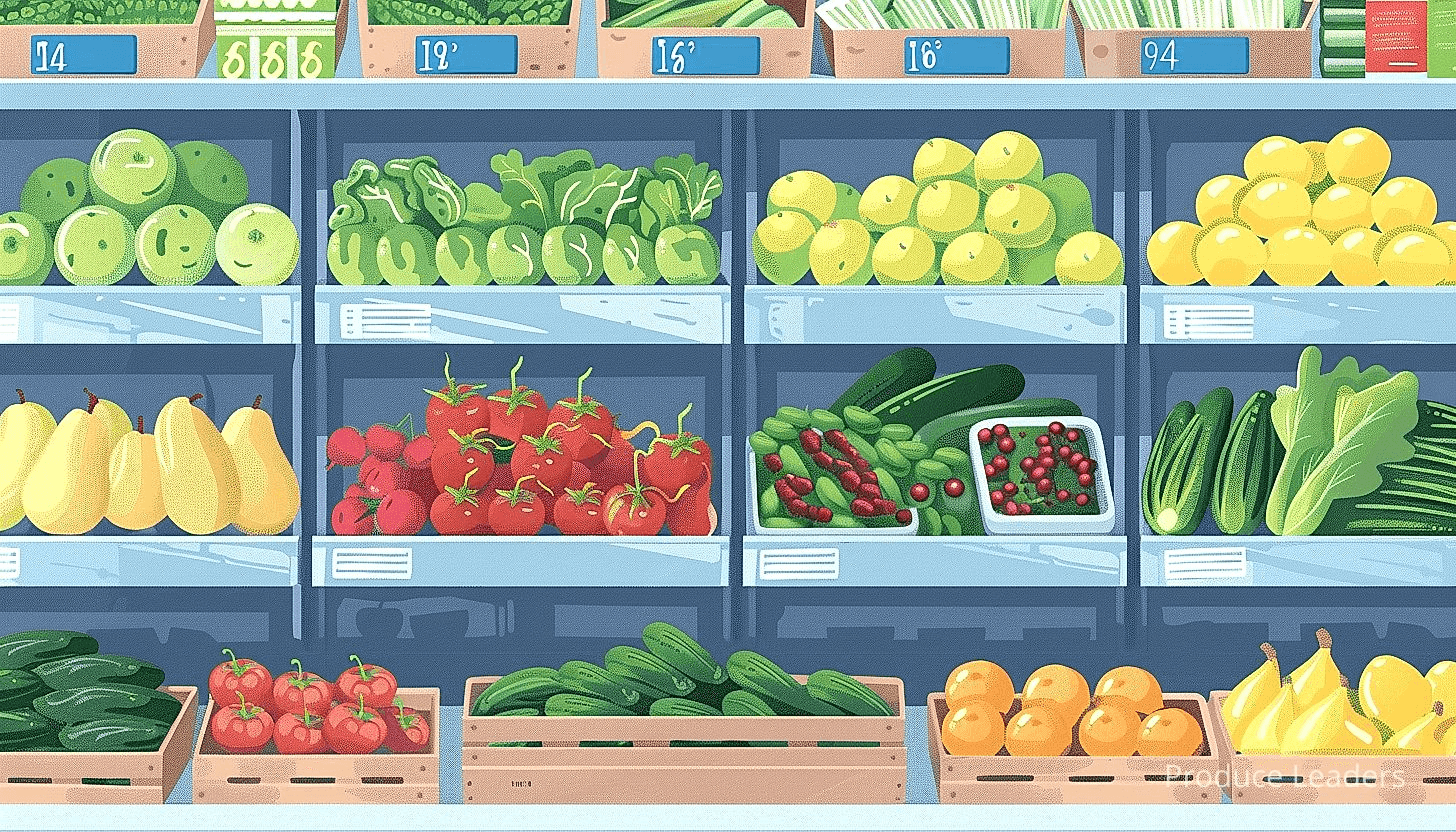
Consumers and regulators alike are asking for greater accountability in recent times. Now, isn’t it obvious that traceability provides this?
The necessary information can be retrieved and verified promptly with proper produce traceability system. A critical component indeed for a well-functioning supply chain, isn’t it?
Did you know that foodborne diseases have plagued the global food system? A system exists to tackle this problem, and traceability is at its heart.
The ability to swiftly trace the source of contamination could drastically reduce the impact of a foodborne illness outbreak. Isn’t that powerful?
The importance of swiftly handling a food safety crisis is unquestionable, I hope we all agree?
Allow me now to unravel some key benefits of produce traceability:
- Enhanced Quality Control: Traceability helps maintaining high produce quality.
- Improved Supply Chain Management: Information access and visibility make for smoother operations.
- Consumer Confidence: Transparency builds trust with consumers.
A savvy consumer demands quality assurance in fresh produce. Your business achieves that through traceability, doesn’t it?
Traceability isn’t just a requirement. It presents a business opportunity for fresh produce retailers.
With a good produce traceability system, businesses can attest to their commitment towards quality standards. Isn’t that a valuable advantage?
Coming up next is the financial aspect. What if you could save yourself from costly recalls? A heightened role for traceability, right?
It provides an efficient means to isolate the problem and execute specific product recalls. Saving both costs and brand image, isn’t that worth considering?
And finally, here’s a thought. With increasing global trade, wouldn’t we need globally harmonized traceability systems? Such exciting and important questions to think about as we move ahead. Don’t you agree?
Necessity of Distribution Pathway Records
In Short: Maintaining records of product distribution pathways instills customer trust through transparency, protects companies during crises, and aids in operational optimization. Utilization of technology, cooperation with the entire supply chain, and compliance emphasis are key practices for effectively managing these records.
Keeping track of where your produce has come from and where it is going to is crucial in today’s retail environment. Why might you ask?
Firstly, it provides transparency. Customers nowadays are much more interested in understanding the journey of the food they consume.
Such information on food entails a sense of trust. Being more informed about the products they consume inevitably leads to an increase in customer confidence.
Would you not rather shop at a store which is transparent about their sourcing?
Secondly, such records can protect companies. In the unfortunate event of a foodborne illness outbreak or a product recall, having detailed records of your distribution pathway can help speed up the process of finding the source of the problem and mitigating damage.
But how exactly do we maintain such records? Here are a few measures and practices one can adopt:
- Use of technology: Employing tools such as blockchain, IoT devices, and track-and-trace solutions can make recording, storing and accessing distribution data easier and more reliable.
- Cooperation with full supply chain: Sharing and receiving information with suppliers, distributors, and retailers results in a centralization of data while enhancing transparency.
- Keeping compliance as a priority: Data requisites differ in countries and sectors, which is why it’s pertinent to be aware of the regulations in your specific area to follow the existing norms.
The benefits of these practices are quite apparent and easy to understand, aren’t they?
Apart from consumer and company protection, maintaining distribution pathway records also aids in optimizing operations. The data gathered about the distribution of goods can be analyzed to fine-tune processes, which could lead to reductions in wasted produce, improved transportation routes, and eventually, cost savings.
And as the old adage goes, a penny saved is a penny earned, right?
Last but not least, monitoring distribution pathways is an effective method for ensuring quality control. By overseeing the journey of the produce from its source to the consumer’s shopping basket, retailers can identify and address any gaps or inconsistencies in their supply chain, thus improving the overall quality of their produce.
Surely everyone strives for high quality in their products, don’t they?
In a nutshell, the importance of distribution pathway records in providing transparency, protecting consumers and companies, and optimizing operations, can’t be overemphasised. This level of attentiveness towards distribution records manifests a healthy respect for consumers, while also nurturing the development of your business.
Recall Procedures in Retail
In Short: The process of product recall in retail involves identifying potentially unsafe items, particularly fresh produce, and strictly adhering to protocols to remove them from sale. Successful recall is not only a demonstration of a retailer’s commitment to customer safety but also vital in maintaining the retailer’s reputation and financial stability.
The process of removing potentially unsafe products from the market involves a crucial procedure known as a recalls. Products such as fresh produce are susceptible to various issues that can deem them unsafe, requiring immediate withdrawal from retail stores.
Recalling fresh produce is a meticulous task necessitating adherence to specific protocols.
How does this procedure typically unfold?
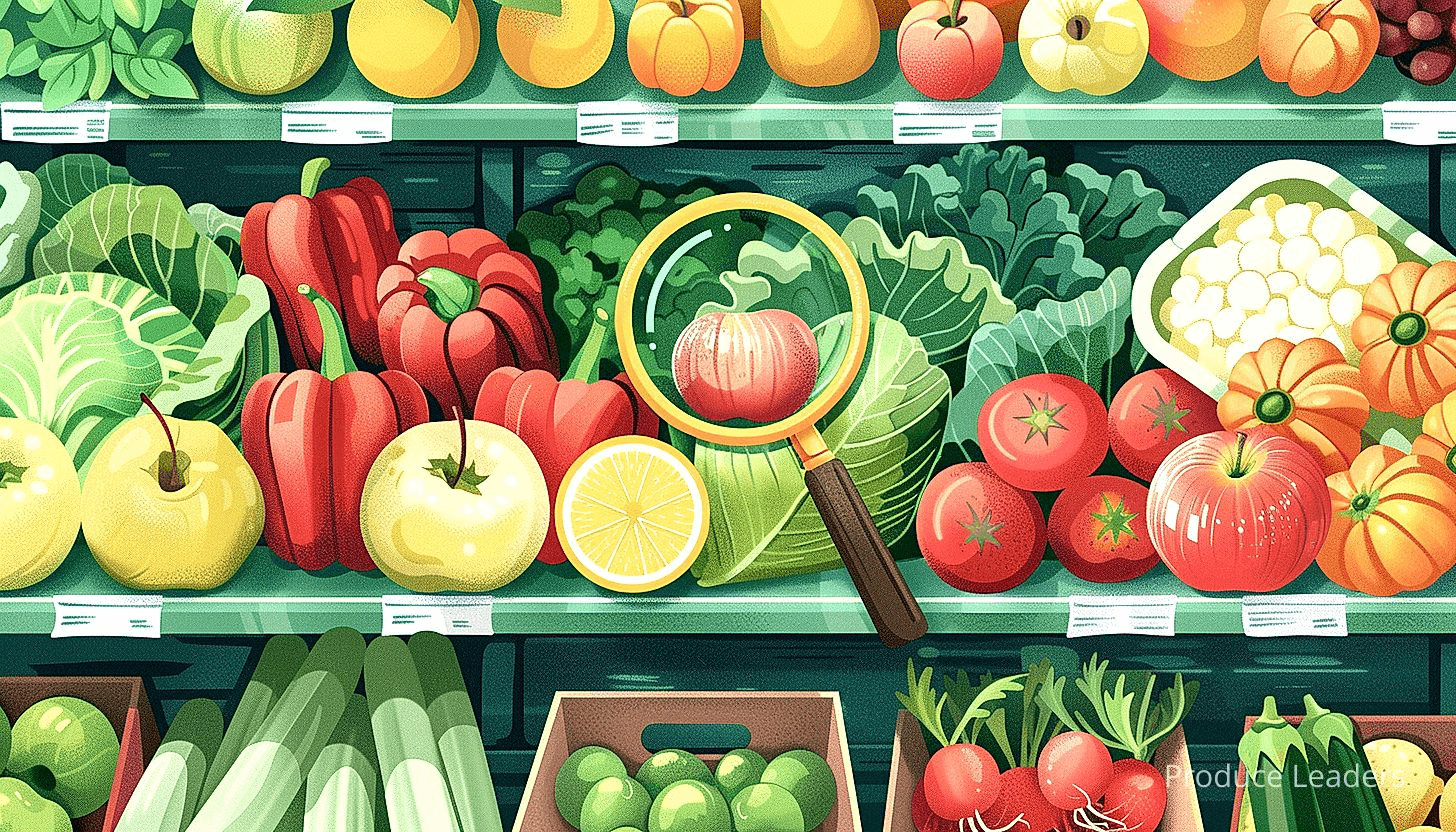
First, the retailer needs to identify the problem with the specific product. This might involve health inspections, customer complaints, or direct notifications from the supplier or producer.
Once a problem is detected, the retail establishment needs to be informed immediately to initiate the recall process. Generally, organized, efficient communication channels need to exist to expedite this process.
Undoubtedly, swift action in these situations is important, isn’t it?
What steps are typically followed during the recall process? Here are some standard procedures:
- To begin with, isolate the problematic product to avoid further sales.
- Next, track and document all relevant details about the product, like the batch number, production date, and supplier information.
- Thirdly, inform all involved parties, including supervisory authorities and the product supplier.
- Lastly, destroyed or returned recalled products are to be recorded and reported appropriately.
As straightforward as these steps may seem, it is the retailer’s responsibility to ensure adherence to them thoroughly and consistently.
Don’t forget, the success of a recall hinges not only on established protocols but also on individual responsibility and initiative. This means that every employee in the retail chain should not only be aware of these procedures but should also be willing and able to participate actively.
If you’re a store manager, how prepared is your team to handle a recall?
Product recalls represent a costly, potentially destructive occurrence for retailers. Yet, properly implemented, they can also be viewed as a powerful demonstration of that retailer’s commitment to customer safety. It’s essential, therefore, that all retail outlets have solid recall procedures in place.
So how does this apply specifically to fresh produce?
Given the highly perishable nature of these products, swift action becomes even more critical. Thorough training in the relevant recall procedures and standards should be a major focus for all staff members in the produce section.
Furthermore, the high turnover rate and large quantities of fresh produce make the process of tracking and documenting these products even more difficult. Unfortunately, these challenges make the incidence of recalls in this sector all too frequent, don’t they?
Important: The success of a recall hinges not only on established protocols but also on individual responsibility and initiative, requiring everyone involved, from the retailer to each employee, to adhere thoroughly and consistently to recall procedures to ensure customer safety.
The identification and removal of potentially harmful fresh produce is therefore considerably more complex than for non-perishable items. This only underscores the need for robust, responsive recall procedures that can handle the intricacies of these cases.
When a recall is handled effectively, it not only protects the health and wellbeing of the customer, but it also preserves the reputation and financial viability of the retail outlet. Indoctrinating well-structured recall procedures to all retail staff members is therefore an investment worth making, wouldn’t you agree?
The Bottom Line
Quality in fresh produce is defined by a variety of factors including, but not limited to, size, ripeness, disease and damage criteria, and a vigilance in pest prevention.
The retail standards for produce greatly emphasize size, establishing it as a crucial determinant in the perceived value and appeal of fresh produce amongst consumers.
Ripeness is comprehensively assessed through multi-sensory examinations, taking into account color, texture, aroma, and taste, thus enabling the optimal selection of produce at the pinnacle of its freshness and quality.
Strict criteria are laid out for disease and damage in fresh produce, ensuring that anything contradicting these guidelines is isolated promptly to preserve overall produce quality and to prevent potential contaminants.
Preventing pests in fresh produce is of paramount importance, as it directly influences the quality, shelf-life, and safety of produce, involving strategies like sanitation, inspection, and appropriate use of pesticides.
Discerning handling and storage regulations are a significant contributor to maintaining the freshness, safety, and quality of produce after harvest.
By implementing proper temperature control in retail stores, retailers can significantly enhance the longevity and quality of their produce, leading to reduced wastage and improved consumer satisfaction.
The implementation of produce traceability systems is essential in the contemporary retail environment to enhance supply chain visibility, ensure food safety, and efficiently manage recalls.
Keeping meticulous records of the distribution pathway is important not only for tracing the origin in case of recalls but also for maintaining a transparent and accountable supply chain that can react quickly and effectively to potential issues.
Recall procedures in retail need to be swift and efficient, ensuring potentially harmful produce is quickly removed from shelves, consumer safety is upheld, and confidence in the store’s standards and quality assurance is maintained.

